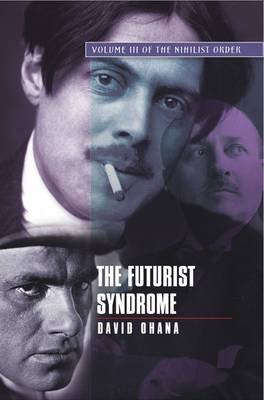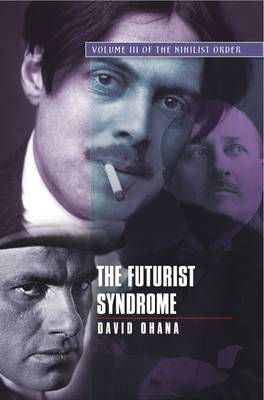
- Afhalen na 1 uur in een winkel met voorraad
- Gratis thuislevering in België vanaf € 30
- Ruim aanbod met 7 miljoen producten
- Afhalen na 1 uur in een winkel met voorraad
- Gratis thuislevering in België vanaf € 30
- Ruim aanbod met 7 miljoen producten
Omschrijving
In the turbulent period between 1870 and 1930, the contours on modernity were taking shape, especially the connections between technology, politics and aesthetics. The trilogy The Nihilist Order traces the genealogy of the nihilist-totalitarian syndrome. "The Futurist Syndrome" deals with three variants of the avant-garde artistic movements of European Futurism, and their fascination with totalitarian regimes. Those movements, represented here by their leaders, are: Italian Futurism and fascism, represented by Marinetti; Russian Cubo-Futurism and bolshevism, represented by Mayakovsky; and English Vorticism and its glorification of Hitler, represented by Wyndham Lewis. The Italian futurist movement typified the double image of modernism. Worshipping the major features of the modern age such as dynamism, speed and industrial and urban aesthetics, they added ideological concepts such as "heroic technology" and "mechanised warfare". The Russian version of Futurism joined hands with local revolutionaries in an attempt to destroy the old world and bring about modernization, yet ironically used irrational religious terminology to explain its purpose. Using nihilistic language, Mayakovsky's revolutionary poetry opposed bourgeois imagery and mythologised the Russian people and Lenin. The third case study, Wyndham Lewis, was a renowned painter, writer, editor and cultural critic. His artistic movement, Vorticism, the English version of futurism, and his glorifying portrayal of the Nazi dictator, Hitler (1931), exemplified the two faces of Fascism: aesthetic nihilism within a totalitarian structure. These three examples, while different and tied to their particular nationalities, show that the artistic principles of the futurist syndrome had universal appeal and created a climate of opinion that paved the way for the rise of European totalitarianism.
Specificaties
Betrokkenen
- Auteur(s):
- Uitgeverij:
Inhoud
- Aantal bladzijden:
- 206
- Taal:
- Engels
Eigenschappen
- Productcode (EAN):
- 9781845192914
- Verschijningsdatum:
- 3/11/2009
- Uitvoering:
- Hardcover
- Formaat:
- Genaaid
- Afmetingen:
- 229 mm x 152 mm
- Gewicht:
- 453 g

Alleen bij Standaard Boekhandel
Beoordelingen
We publiceren alleen reviews die voldoen aan de voorwaarden voor reviews. Bekijk onze voorwaarden voor reviews.











